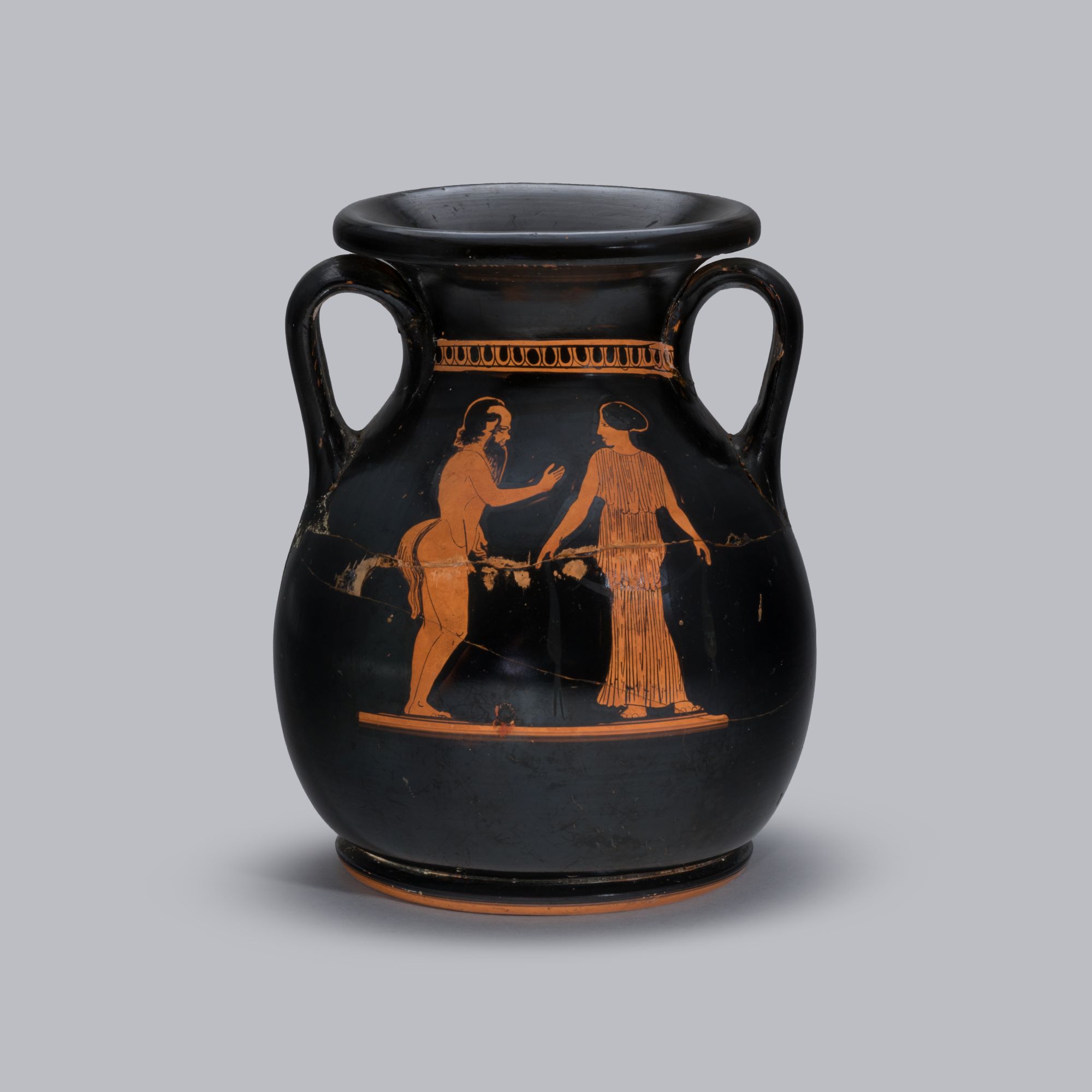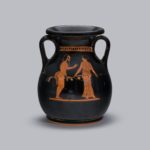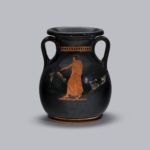
Pelike [Gr26]
Athenian Red-Figure, 430-420 BC
Painted terracotta (h. 18.5 cm, d. 15.1 cm), mended and restored
A decorative band at the neck, on the body a man in himation opposite a satyr and a maenad.
This vase shows a satyr reaching towards a maenad. Satyrs were part man, part beast, with a tail like a horse and goat-like facial features. They were the mythical companions of Dionysus, the god of wine, and revelled in drunkenness, music and dancing. They had a voracious sexual appetite, particularly for maenads, the female devotees of Dionysus.
The maenad is wearing a chiton, with extensive use of relief lines to convey the volume and lightness of the fabric. Similar effects can be seen in ancient Greek sculpture. Her feet are shown facing the viewer, using the technique of foreshortening to give a realistic sense of depth. This concern with representing visual experience was typical of Greek art in the 5th century BC.
On the opposite side of the vase from the satyr and maenad is a youth. This figure is perhaps intended as a link between the real world of Athens and the mythical realm of the god. He is dressed in an ordinary cloak, but around his head is a wreath, perhaps of ivy or vine leaves, both of which were associated with Dionysus. He gestures towards the figures on the other side of the vase, as if hoping to join them.
Vases of this shape were used mainly for the storage of liquids, especially oil and wine, but from the mid-5th century BC onwards they might also contain the ashes of the dead and had a role in funerary rituals. The painter of this jar is known as the ‘Washing Painter’ because he specialised in small vases with scenes of women in domestic settings, sometimes washing themselves at a basin. More than three hundred vases have been attributed to him, including two others in Winchester’s collection (Gr24 and Gr105).
Literature: J. Falconer and T. Mannack, Corpus Vasorum Antiquorum: Great Britain, Fascicule 19: Winchester College (Oxford, 2002), pp. 9-10, plate 8.10-11; V. Sabetai, ‘The Washing Painter: a Contribution to the Wedding and Genre Iconography of the Fifth Century B.C.’, (PhD Dissertation, University of Michigan, Ann Arbor, 1994), p. 63, no. P53; J.D. Beazley, Attic Red-Figure Vase-Painters 2nd edn. (Oxford, 1963), p. 1130.149; Winchester College Memorial Buildings: Department of Classical Art (Winchester, 1909), p. 23 (no. 87)
Provenance: Gift of Miss Preston before 1909
Location: Treasury, Gallery 3

